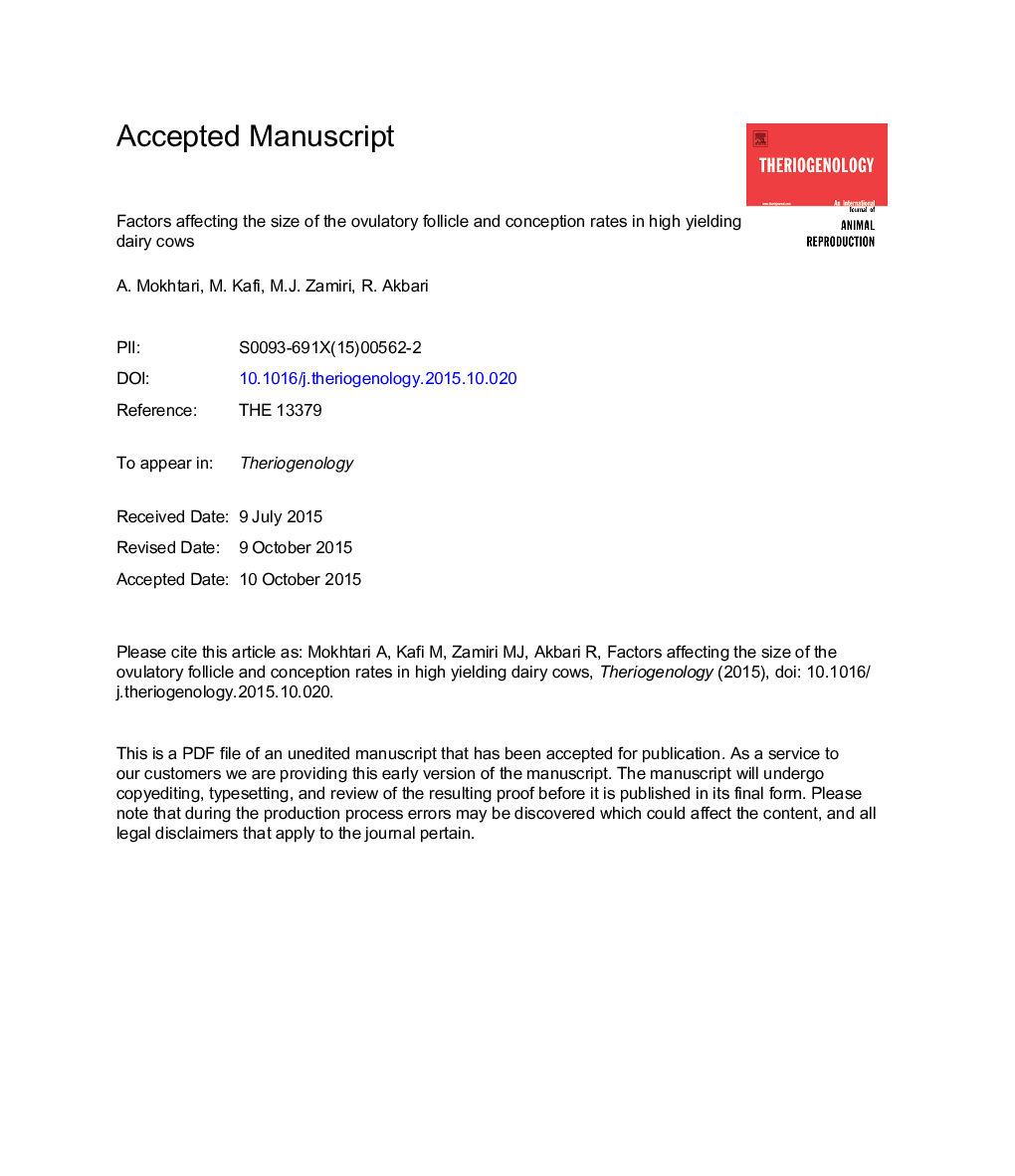| Article ID | Journal | Published Year | Pages | File Type |
|---|---|---|---|---|
| 10891726 | Theriogenology | 2016 | 22 Pages |
Abstract
Two studies were designed to determine (1) the effects of Heatsynch and Ovsynch protocols versus spontaneous ovulation and (2) the effects of calving problems, clinical uterine infections, and clinical mastitis on the size of the ovulatory follicle, conception rate, and embryonic/fetal (E/F) death in high-yielding dairy cows. In study 1, cows without the history of calving problems, clinical uterine infections, and clinical mastitis were randomly allocated to either an Ovsynch (n = 45) or Heatsynch (n = 39) ovulation synchronization protocol or spontaneous ovulation (n = 43) groups. Blood samples were collected on the day of artificial insemination (AI) to measure progesterone (P4), estradiol-17β, and insulin-like growth factor 1 (IGF-1) and 7 days later to measure P4. Study 2 consisted of cows (n = 351) with or without the history of calving problems, clinical uterine infections, and clinical mastitis which were artificially inseminated after a 55-day voluntary waiting period. Transrectal ultrasonography was performed at the time of AI to measure the ovulatory follicle size and on Days 30 and 68 after AI to diagnose pregnancy in both studies. In study 1, the mean (±standard error of the mean) diameter of the ovulatory follicle was greater (P = 0.0005) and E/F mortality was lower (P = 0.007) for the spontaneous ovulation group compared with Ovsynch and Heatsynch groups. Serum concentration of P4 on Day 7 after AI was correlated with the size of the ovulatory follicle (P = 0.007). Conception rate at Days 30 and 68 was not significantly different between the three experimental groups in study 1. Cows with serum IGF-1 concentrations greater than 55 ng/mL at AI had significantly higher Day 68 conception rate (50% vs. 24%) and lower E/F death (16.6% vs. 40%) compared to cows with serum IGF-1 concentrations lower than 56 ng/mL at AI. The conception rate on Days 30 and 68 for follicles of 10 to 14 mm in diameter (34% and 21.8%) was significantly lower than follicles of 14.1 to 19 mm in diameter (60% and 50%), respectively (P < 0.05). In study 2, the ovulatory follicle in cows with clinical uterine infections was smaller than that in cows without clinical uterine infections (16.4 vs. 17.1 mm; P = 0.04). In conclusion, the size of the ovulatory follicle is affected by ovulation synchronizing protocols and postpartum clinical uterine infections. In addition, cows with higher serum IGF-1 concentrations on the day of AI had higher Day 68 conception rate and lower E/F death.
Related Topics
Life Sciences
Agricultural and Biological Sciences
Animal Science and Zoology
Authors
A. Mokhtari, M. Kafi, M.J. Zamiri, R. Akbari,
